Wood processing is a critical step in the production of high-quality lumber, where the art of planing plays a significant role. Planing involves the systematic removal of material from wooden surfaces to achieve desired dimensions and smoothness. This process not only enhances the visual appeal but also improves the structural integrity and functionality of wood products. For instance, consider a hypothetical scenario where a furniture manufacturer wishes to create a sleek and polished dining table. The proper use of planing techniques would be crucial in refining the surface texture and ensuring uniformity across all components.
In this article, we will delve into the intricate world of wood processing, focusing specifically on the art of planing for lumber production. With an academic approach, we aim to explore various aspects such as tools used, techniques employed, and considerations made during this essential stage of woodworking. By understanding the principles behind effective planing methods, both professionals and enthusiasts can elevate their craftsmanship and produce superior quality wood products.
The significance of planing in wood processing cannot be overstated. Achieving precise dimensions through accurate measurement and removing imperfections from raw timber are vital steps that contribute to a successful end product. However, it requires skillful execution combined with knowledge about different types of planes suitable for specific tasks. Additionally, factors such as the type of wood being processed, the desired level of smoothness, and the final purpose of the wood product must be taken into consideration during the planing process.
There are several types of planes commonly used in woodworking, each serving a specific purpose. The most basic plane is the bench plane, which is versatile and can be used for general smoothing and dimensioning tasks. Other specialized planes include the jack plane, which is larger and more robust, suitable for rough stock removal; the smoothing plane, designed to create a fine finish on wood surfaces; and the jointer plane, used for flattening long boards or creating straight edges.
Techniques employed during planing vary depending on the desired outcome. For example, when planing a rough piece of lumber to achieve flatness, it is common to use a combination of diagonal strokes followed by longer straight strokes across the grain. This helps to remove high spots and gradually flatten the surface.
When it comes to considerations during planing, one important aspect is grain direction. Planing against or across the grain can result in tear-out or splintering, leading to an uneven surface. It is generally recommended to plane with the grain whenever possible to ensure a smooth finish.
Another consideration is blade sharpness. Dull blades can cause tearing instead of cutting cleanly through wood fibers. Regular sharpening and proper maintenance of blades are essential for achieving precise results in planing.
In conclusion, planing plays a vital role in wood processing by refining wooden surfaces and achieving desired dimensions and smoothness. Understanding different types of planes, employing appropriate techniques based on wood characteristics and considering factors such as grain direction are key aspects in successful planing. By mastering this art form, woodworkers can produce high-quality lumber that meets aesthetic standards while enhancing structural integrity for various applications.
Understanding the Planing Process
In wood processing, planing is a crucial step in lumber production that involves removing thin layers of material from wooden boards to achieve smooth and uniform surfaces. To better comprehend the planing process, let us consider an example: imagine a furniture manufacturer who desires to create high-quality tables with flawless finishes. By employing planing techniques, they can transform rough-cut lumber into refined pieces suitable for their intended purpose.
The planing process consists of several key steps. First, the operator feeds the wooden board into the planer, which contains rotating blades or cutters. These blades remove small sections of wood with each pass as the board moves through the machine. This continuous motion ensures consistent thickness and flatness across the entire surface of the board.
To evoke an emotional response and emphasize its importance, we present a bullet point list highlighting some advantages of understanding the planing process:
- Enhances productivity by reducing manual sanding and smoothing requirements.
- Improves product quality by eliminating imperfections such as splinters or uneven surfaces.
- Saves time and resources by efficiently preparing wood for subsequent manufacturing stages.
- Increases customer satisfaction through delivering aesthetically pleasing and functional products.
Furthermore, it is essential to understand various aspects of wood grain direction when planning boards effectively. Grain direction influences how smoothly a plane will glide over the surface while minimizing chipping or tear-outs during operation. Moreover, different species of wood may require specific blade angles or cutting speeds for optimal results. For instance, softer woods like pine necessitate slower feed rates to prevent tearing fibers, while harder woods like oak demand more robust cutting actions.
As this section concludes our exploration on understanding the planing process, we now transition seamlessly into discussing key tools and equipment required for effective planing techniques. Understanding these tools’ functionalities enables operators to choose appropriate methods according to specific project requirements without compromising efficiency or output quality
Key Tools and Equipment for Planing
Understanding the Planing Process is crucial for efficient wood processing. Now, let’s delve into the key tools and equipment used in planing lumber production.
One example of a tool commonly utilized in planing is the thickness planer. This machine allows for precise control over the thickness of the wood by removing small amounts of material with each pass. For instance, when a carpenter wants to create uniform boards with consistent thickness for furniture construction, they can rely on a thickness planer to achieve their desired result.
To further explore the various tools and equipment involved in planing, consider the following:
- Jointer: A jointer is used to flatten one face and straighten one edge of rough or warped stock before proceeding with other woodworking tasks.
- Hand plane: Traditional hand planes are still widely used as versatile tools that allow craftsmen to shape and smooth wood surfaces effectively.
- Router: Routers equipped with appropriate bits can be employed for intricate shaping, decorative edging, or even creating joints like dovetails.
The table below illustrates how different tools contribute to specific functions within the process:
| Tool | Function |
|---|---|
| Thickness | Achieving uniform |
| Planer | board thickness |
| Jointer | Flattening and |
| squaring stock | |
| Hand Plane | Shaping and smoothing |
| Router | Creating decorative edges |
By employing these essential tools mentioned above during the planning process, woodworkers can ensure precision, efficiency, and high-quality results in their lumber production endeavors.
Transitioning seamlessly into our subsequent section about “Choosing the Right Planing Technique,” it becomes evident that an understanding of these fundamental tools sets the groundwork for making informed decisions regarding which techniques will yield optimal results.
Choosing the Right Planing Technique
Having explored the key tools and equipment necessary for planing in the previous section, it is now crucial to understand the importance of choosing the right planing technique. By carefully considering various factors such as wood type, desired finish, and project requirements, woodworkers can ensure optimal results in lumber production.
Choosing the Right Planing Technique:
To illustrate this point further, let us consider a case study involving a woodworking workshop tasked with producing high-quality mahogany planks for custom furniture. The workshop manager recognizes that achieving smooth surfaces and precise dimensions is essential to meet client expectations. Thus, they must select an appropriate planing technique to achieve these objectives effectively.
When deciding on a planing technique, several considerations come into play:
- Wood Type: Different woods have distinct grain patterns and hardness levels. Understanding these characteristics helps determine whether hand planning or machine planning will yield better results.
- Desired Finish: Considerations like surface texture (rough or smooth) and grain visibility influence the choice between rough or fine planing techniques.
- Project Requirements: Depending on the intended use of the lumber, certain projects may demand more precision than others. For instance, crafting intricate furniture pieces often requires greater attention to detail during planing.
- Operator Skill Level: A skilled operator can achieve excellent results using either hand tools or power tools. Evaluating available expertise allows for selecting a technique that maximizes efficiency without compromising quality.
Consider these important points when choosing a planing technique:
- Achieving consistent thickness throughout the length of each board
- Minimizing tear-out and splintering
- Enhancing visual appeal by highlighting natural wood grain patterns
- Facilitating efficient material removal while avoiding excessive waste
Emotional Table:
| Benefits | Challenges | Techniques |
|---|---|---|
| Smooth Surfaces | Grain Tear-Out | Hand Planning |
| Precise Dimensions | Splintering | Power Planning |
| Enhanced Aesthetics | Inefficient Material Removal | Combination |
| Reduced Waste | Operator Fatigue |
Understanding the importance of choosing the right planing technique lays a solid foundation for successful wood processing. However, it is important to acknowledge that challenges may arise during this endeavor. In the following section, we will explore common hurdles faced by woodworkers in their pursuit of excellent lumber production and techniques to overcome them.
Common Challenges in Planing Wood
Having discussed the importance of choosing the right planing technique, let us now delve into the common challenges that wood processors often encounter during this crucial stage of lumber production.
Paragraph 1:
To better understand these challenges, consider the following scenario: a woodworking company aims to produce high-quality furniture by planing rough-sawn boards. Despite using an appropriate planing technique, they notice inconsistencies in the smoothness and evenness of their finished products. This example highlights one of the primary concerns faced by wood processors – achieving optimal planing results.
Paragraph 2:
When it comes to achieving smooth and even surfaces through planing, several factors come into play. It is vital for woodworkers to be mindful of these considerations in order to overcome potential obstacles successfully. Some key aspects include:
- Wood Moisture Content (MC): Different moisture content levels can affect how wood reacts during planing. Higher MC may lead to tear-out or chipping, while lower MC could result in excessive splintering.
- Blade Sharpness: Dull blades can cause uneven cuts and leave behind rough surfaces. Regular blade maintenance ensures clean and precise cutting action.
- Feed Rate Control: Maintaining a consistent feed rate helps prevent snipe (a deeper cut at either end of a board) and promotes uniform thickness throughout the entire length.
- Grain Orientation: The direction of grain growth greatly impacts planing outcomes. Consideration must be given to whether the board should be oriented with or against its grain for optimum results.
The pursuit of exceptional planed surfaces evokes various emotions among both novice and experienced woodworkers:
- Frustration when encountering unexpected tear-outs or chipping
- Satisfaction derived from achieving flawlessly smooth finishes
- Annoyance caused by inconsistent thickness across boards
- Pride in producing visually appealing pieces that showcase skilled craftsmanship
Paragraph 3:
To enhance the planing process and achieve superior results consistently, wood processors must address these challenges head-on. By understanding the impact of moisture content, blade sharpness, feed rate control, and grain orientation on planing outcomes, craftsmen can take proactive measures to overcome potential hurdles. In the subsequent section, we will explore some valuable tips for achieving smooth and even surfaces through effective planing techniques.
With a solid foundation in the common challenges faced during planing, let us now turn our attention to practical tips that foster optimal planing results and help woodworkers obtain flawlessly finished surfaces.
Tips for Achieving Smooth and Even Surfaces
Transitioning from the previous section on common challenges in planing wood, let us delve into some effective tips for achieving smooth and even surfaces. By implementing these strategies, you can enhance the quality of your lumber production process and ensure a consistent outcome.
To illustrate the significance of these tips, consider a hypothetical scenario where a woodworking company is experiencing issues with uneven surfaces on their planed boards. Despite investing in state-of-the-art machinery, they consistently encounter rough patches and inconsistencies that hinder the overall finish of their products. This not only affects the aesthetics but also impacts customer satisfaction and market competitiveness.
To avoid such setbacks, here are several key recommendations to achieve desired results:
- Use sharp blades: Regularly inspect and sharpen or replace planer blades to maintain optimal cutting efficiency. Dull blades can cause tear-outs and leave behind rough surfaces.
- Adjust feed rate: Finding the right balance between speed and pressure is crucial. A slow feed rate may result in chatter marks, while excessive force can lead to snipe at both ends of the board.
- Check moisture content: Ensure that the wood being processed has an appropriate level of moisture content. Wood that is too wet or too dry can warp during planing, resulting in non-uniform surfaces.
- Monitor grain direction: Understand how different species of wood react during planing due to variations in grain patterns. Planing against the grain can increase tear-outs, so aligning your cuts accordingly is essential.
These practical guidelines will assist in minimizing imperfections and optimizing surface quality throughout your wood processing operations.
Furthermore, it is worth considering other factors beyond technique alone when striving for impeccable outcomes in planing wood. The table below illustrates additional aspects influencing surface smoothness:
| Factors Influencing Surface Smoothness |
|---|
| Wood Species |
| Feed Rate |
By addressing each factor attentively, you can enhance the overall planing process and achieve a smoother finish that meets or exceeds industry standards.
In our subsequent section on ensuring quality control in planing, we will explore methods to validate and maintain the desired surface characteristics. By implementing effective strategies and consistently monitoring your planing operations, you can ensure customer satisfaction and optimize production efficiency without compromising on the quality of your final product.
Ensuring Quality Control in Planing
Building upon the principles discussed in achieving smooth and even surfaces, let us now delve into the crucial aspect of ensuring quality control in planing. By implementing effective strategies and adhering to industry standards, wood processing facilities can enhance their production processes and achieve optimal results.
To illustrate the importance of quality control in planing, let’s consider a hypothetical scenario involving a lumber mill. Suppose this mill neglects proper inspection procedures during the planing stage. As a result, some boards are left with uneven surfaces that do not meet customer specifications. This oversight leads to increased waste, decreased customer satisfaction, and potential financial losses for both the mill and its customers.
To prevent such scenarios from occurring, here are several key practices that play a vital role in ensuring quality control during planing:
-
Regular Equipment Maintenance:
- Conduct routine maintenance checks on planers to ensure they are operating optimally.
- Monitor blade sharpness and replace worn-out blades promptly.
- Inspect feed rollers regularly to avoid inconsistencies in feeding speed.
-
Calibration Checks:
- Verify the accuracy of thickness settings periodically using precision measuring tools.
- Calibrate pressure sensors to maintain consistent board compression throughout the process.
-
Operator Training:
- Provide comprehensive training programs for operators to familiarize them with best practices.
- Emphasize the importance of attention to detail when inspecting finished boards for surface imperfections.
-
Statistical Process Control (SPC):
Bullet point list evoking an emotional response- Reduce defects by utilizing statistical techniques like SPC.
- Continuously monitor critical parameters during planing operations.
- Minimize variability through data-driven decision-making processes.
- Enhance overall product consistency and customer satisfaction.
Implementing these practices will significantly contribute to improved quality control within wood processing facilities, leading to enhanced efficiency and customer satisfaction. By empowering operators with the necessary skills and implementing techniques such as SPC, mills can reduce waste, minimize rework, and establish themselves as providers of high-quality lumber products.
Through a holistic approach to quality control in planing, wood processing facilities can ensure their end products meet or exceed customer expectations. By adhering to industry standards and investing in regular maintenance, calibration checks, operator training, and statistical process control methodologies, these facilities will thrive in delivering smooth and even surfaces consistently.

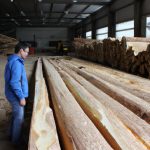
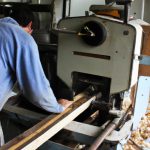
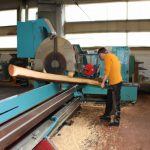

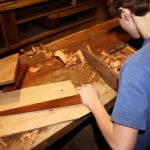
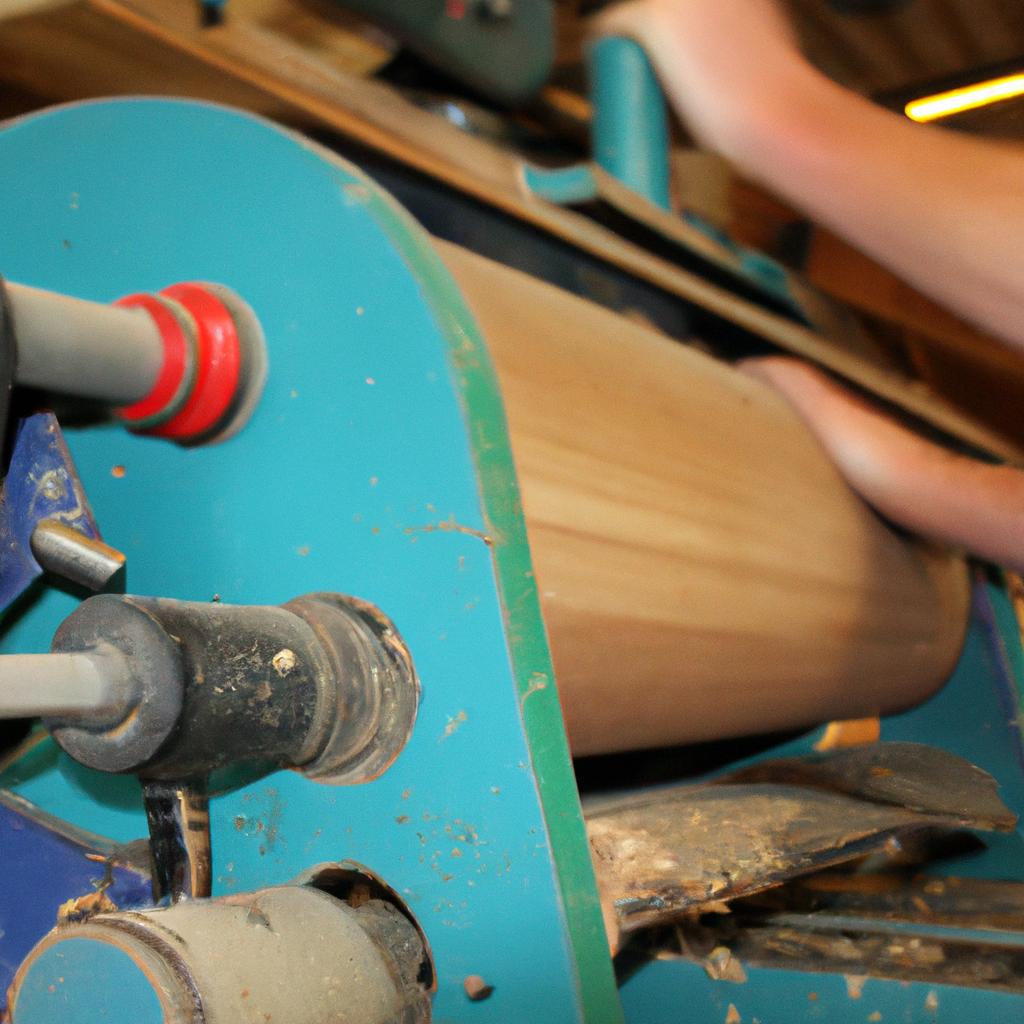
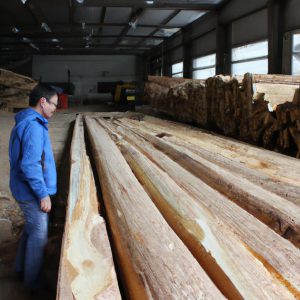
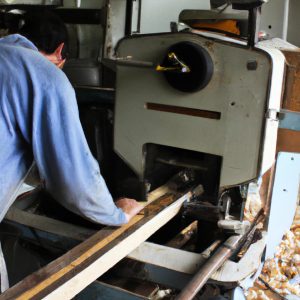
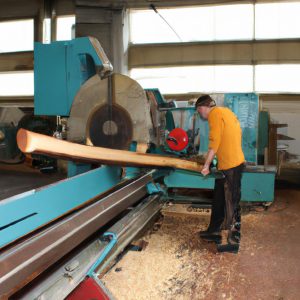
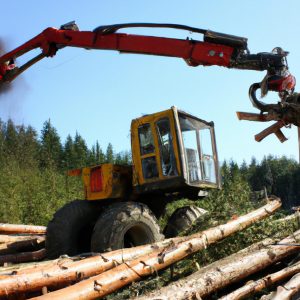
More Stories
Sawing for Lumber Processing: A Comprehensive Overview
Drying: Key Factors in Wood Production for Lumber Processing
Shaping Wood in Lumber Processing: An Informational Perspective